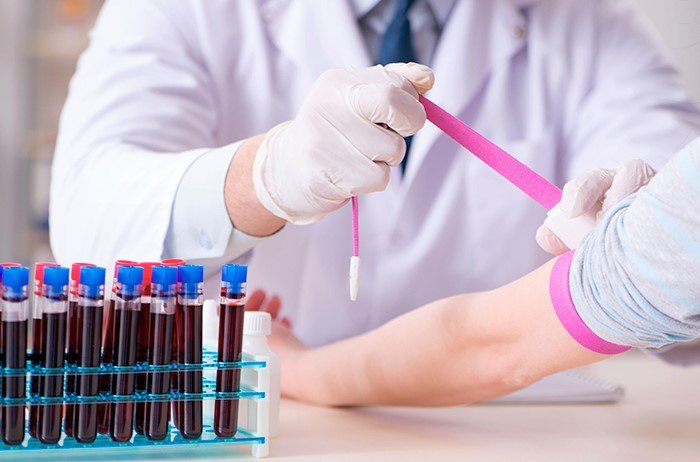Managing Pediatric Medical Supplies and Equipment for Phlebotomy: Challenges and Strategies
Summary
- Hospitals in the United States face the challenge of ensuring they have enough pediatric-sized medical supplies and equipment for phlebotomy procedures.
- The process involves assessing the needs of pediatric patients, purchasing the necessary supplies, and maintaining an inventory to ensure readiness.
- Hospital supply and equipment management systems are crucial in managing pediatric medical supplies efficiently and effectively.
Introduction
Hospitals in the United States are tasked with providing high-quality healthcare to patients of all ages, including pediatric patients. One crucial aspect of pediatric care is ensuring hospitals have an adequate supply of pediatric-sized medical supplies and equipment for procedures such as phlebotomy. Phlebotomy, the process of drawing blood from a patient for testing or donation, requires specialized supplies and equipment to ensure the procedure is safe and effective for pediatric patients.
The Importance of Pediatric-Sized Supplies and Equipment
Children have unique medical needs that differ from those of adults, requiring Healthcare Providers to use specialized supplies and equipment when treating pediatric patients. When it comes to phlebotomy procedures, using age-appropriate supplies and equipment is crucial for ensuring the safety and comfort of pediatric patients. Pediatric-sized needles, blood collection tubes, tourniquets, and other supplies are specifically designed to meet the needs of young patients, making the procedure less invasive and traumatic for children.
Challenges Hospitals Face
Despite the importance of having an adequate supply of pediatric-sized medical supplies and equipment, hospitals in the United States often face challenges in ensuring they have enough resources for pediatric patients. Some of the common challenges hospitals encounter include:
- Limited availability of pediatric-specific supplies: Some medical supply manufacturers may not offer a wide range of pediatric-sized supplies, making it difficult for hospitals to source the necessary equipment.
- Cost considerations: Pediatric-sized supplies and equipment can be more expensive than their adult-sized counterparts, leading to budget constraints for hospitals.
- Inventory management: Maintaining an inventory of pediatric supplies and equipment requires careful planning and tracking to prevent shortages and ensure readiness for pediatric patients.
Ensuring an Adequate Supply of Pediatric-Sized Medical Supplies and Equipment
To address the challenges hospitals face in managing pediatric supplies and equipment for phlebotomy procedures, healthcare facilities employ various strategies to ensure they have an adequate supply of resources for pediatric patients.
Assessing Pediatric Patient Needs
One of the first steps hospitals take in ensuring they have enough pediatric-sized medical supplies and equipment is to assess the needs of pediatric patients. By analyzing the volume of Pediatric Phlebotomy procedures performed, the types of supplies and equipment required, and the preferences of Healthcare Providers, hospitals can determine the appropriate quantity and variety of pediatric resources needed.
Purchasing Pediatric-Sized Supplies and Equipment
Once the needs of pediatric patients have been assessed, hospitals can proceed with purchasing the necessary supplies and equipment. To ensure they are sourcing high-quality and age-appropriate supplies, hospitals may work with trusted suppliers and manufacturers that specialize in pediatric medical products. Bulk purchasing, negotiating contracts, and exploring discounts can also help hospitals acquire pediatric supplies cost-effectively.
Inventory Management
Managing an inventory of pediatric-sized medical supplies and equipment is essential for hospitals to maintain readiness and prevent shortages. Hospitals utilize inventory management systems to track the usage, expiration dates, and replenishment needs of pediatric resources. Automated inventory monitoring, par level settings, and regular audits help hospitals optimize their supply levels and ensure they have enough pediatric supplies on hand at all times.
Training Healthcare Staff
Ensuring healthcare staff are trained in properly using pediatric-sized supplies and equipment is crucial for the safe and effective delivery of pediatric care. Hospitals provide training sessions and resources to educate staff on the use of Pediatric Phlebotomy supplies, including proper needle sizes, blood collection techniques, and patient comfort measures. Ongoing education and skills development help Healthcare Providers deliver high-quality care to pediatric patients during phlebotomy procedures.
Collaboration with Pediatric Specialists
Collaborating with pediatric specialists, such as pediatric phlebotomists, pediatric nurses, and pediatric surgeons, can provide valuable insights and recommendations on managing pediatric medical supplies and equipment. By consulting with experts who specialize in pediatric care, hospitals can gain a deeper understanding of the unique needs of pediatric patients and implement best practices for using pediatric-sized supplies during phlebotomy procedures.
Conclusion
Ensuring hospitals in the United States have an adequate supply of pediatric-sized medical supplies and equipment for phlebotomy procedures is essential for delivering high-quality care to pediatric patients. By assessing pediatric patient needs, purchasing age-appropriate supplies, managing inventory effectively, training staff, and collaborating with pediatric specialists, hospitals can overcome the challenges associated with managing pediatric resources and ensure they are well-prepared to meet the healthcare needs of young patients.

Disclaimer: The content provided on this blog is for informational purposes only, reflecting the personal opinions and insights of the author(s) on the topics. The information provided should not be used for diagnosing or treating a health problem or disease, and those seeking personal medical advice should consult with a licensed physician. Always seek the advice of your doctor or other qualified health provider regarding a medical condition. Never disregard professional medical advice or delay in seeking it because of something you have read on this website. If you think you may have a medical emergency, call 911 or go to the nearest emergency room immediately. No physician-patient relationship is created by this web site or its use. No contributors to this web site make any representations, express or implied, with respect to the information provided herein or to its use. While we strive to share accurate and up-to-date information, we cannot guarantee the completeness, reliability, or accuracy of the content. The blog may also include links to external websites and resources for the convenience of our readers. Please note that linking to other sites does not imply endorsement of their content, practices, or services by us. Readers should use their discretion and judgment while exploring any external links and resources mentioned on this blog.

